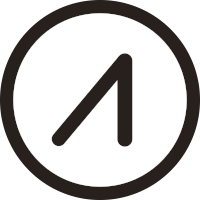Deep Dive
1. Paranets Support (mid-January 2025)
Overview:
Paranets are specialized subnetworks within OriginTrail’s Decentralized Knowledge Graph (DKG), tailored for industries like supply chain, healthcare, or AI. They allow custom governance and data rules while maintaining interoperability with the main network. The feature is part of the V8.0.1 update, building on the V8 launch in December 2024.
What this means:
This is bullish for TRAC because paranets could drive enterprise adoption by offering modular solutions for sectors like Swiss national railways (SBB) and retail giants. Increased usage may raise demand for TRAC tokens to stake and operate nodes.
2. Random Sampling Proof System (February 2025)
Overview:
The RSPS introduces a decentralized auditing mechanism to verify data integrity across nodes. It replaces older proof systems, improving scalability and reducing computational overhead.
What this means:
This is neutral-to-bullish for TRAC. While it strengthens network reliability (a key selling point for partners like Microsoft Copilot), implementation risks like delayed node upgrades could temporarily slow adoption.
3. Collective Programmatic Treasury (March 2025)
Overview:
The CPT will automate ecosystem funding via smart contracts, allocating resources to development, grants, and partnerships. It aims to decentralize decision-making, similar to DAO models.
What this means:
This is bullish for TRAC if executed well, as it could incentivize developer activity and long-term projects. However, governance disputes or low participation might dilute its impact.
Conclusion
OriginTrail’s roadmap focuses on scalability (paranets), security (RSPS), and sustainability (CPT), aligning with its role in AI and real-world asset tokenization. Partnerships with Umanitek, SBB, and Microsoft highlight growing enterprise traction. How quickly will these upgrades translate into measurable network activity and token utility?





 Most Visited
Most Visited Community Sentiment
Community Sentiment Chain Ranking
Chain Ranking Bitcoin Dominance
Bitcoin Dominance Market Cycle Indicators
Market Cycle Indicators Relative Strength Index (RSI)
Relative Strength Index (RSI) Bitcoin Treasuries
Bitcoin Treasuries BNB Treasuries
BNB Treasuries Overall NFT Stats
Overall NFT Stats Upcoming Sales
Upcoming Sales Signals
Signals Trending
Trending New
New Gainers
Gainers Meme Explorer
Meme Explorer Top Traders
Top Traders Feeds
Feeds Lives
Lives Articles
Articles Research
Research